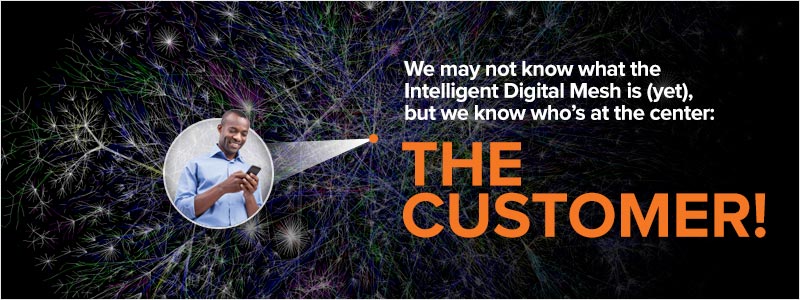Gartner just released their?”Top 10 Technology Trends for 2017″, and the future is bright for intelligent virtual assistants and customer service automation!
Gartner defines a strategic technology trend as “one with substantial disruptive potential that is just beginning to break out of an emerging state into broader impact,”?and they claim that?2017 will set?the stage for the?”Intelligent Digital Mesh” as technology evolves and the physical and digital worlds become increasingly intertwined.
Of the 10 trends Gartner highlights, a number of them speak directly to the ways?our Intelligent Virtual Assistant solutions are already revolutionizing customer experience and helping companies scale their service delivery.
 Artificial Intelligence & Natural Language Processing
Artificial Intelligence & Natural Language Processing
Artificial intelligence is a huge buzzword right now, and we’re just beginning to explore both its applications and implications.?According to Gartner’s David Cearley, we’ll begin to see software and smart machines that?”move beyond traditional rule-based algorithms to create systems that understand, learn, predict, adapt and potentially operate autonomously.”
Our?Intelligent Virtual Assistants?use advanced natural language understanding to communicate conversationally across multiple channels, as well as gather and leverage real-time data to improve?user experience, streamline support, and provide a seamless omni-channel service experience. As it relates to personalized, intuitive, and efficient self-service, we think the sky’s the limit.
 Intelligent Apps
Intelligent Apps
Cearley states, “Other intelligent apps such as virtual customer assistants (VCAs) are more specialized for tasks in areas such as sales and customer service. As such, these intelligent apps have the potential to transform the nature of work and structure of the workplace.”
The digital revolution has had a massive impact on people’s?expectations related to customer service, and intelligent apps and web self-service are becoming the go-to for customers who want fast, effortless access to accurate information. This is core competency for True Image ??here’s a free PDF we created called “The Service Journey of the Future” that goes into more depth.
Not only that, but customers are beginning to expect companies to not just react when a need arises, but proactively recommend?solutions?based on an individual’s past activities and personal preferences???a huge opportunity for big data and AI to deliver wow-worthy, low-effort service.
 Conversational Systems
Conversational Systems
People are already accustomed to carrying on nearly continuous “digital conversations” via text messaging, social media, and apps like Snapchat and Instagram. According to Cearley, “As the device mesh evolves, connection models will expand and greater cooperative interaction between devices will emerge, creating the foundation for a new continuous and ambient digital experience.”
But even as these digital conversations become increasingly common, the fact remains (and psychology research confirms):?People relate best to people. So, if you want to not only scale your service delivery with automation, but also connect with people to increase engagement and build brand loyalty, interactive communication with a HUMAN avatar is the key.
Key takeaways?
As companies adapt to leverage new technology and improve customer experience, Gartner mentions?five major focal points to enable the new capabilities and business models of digital business: information systems, customer experience, analytics and intelligence, the IoT, and business ecosystems.
Related to customer experience, Cearley states, “Plan for a radical, long-term (2020 to 2025) evolution of the user experience for both customers and employees as conversational systems, augmented reality (AR), virtual reality (VR) and continuous/contextual user experiences radically change the way people interact with systems.”


